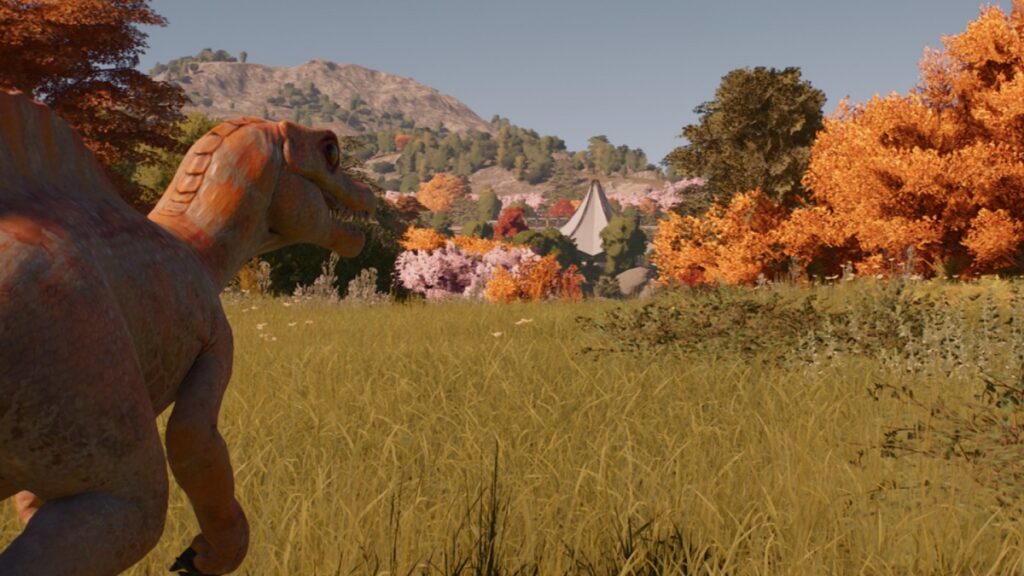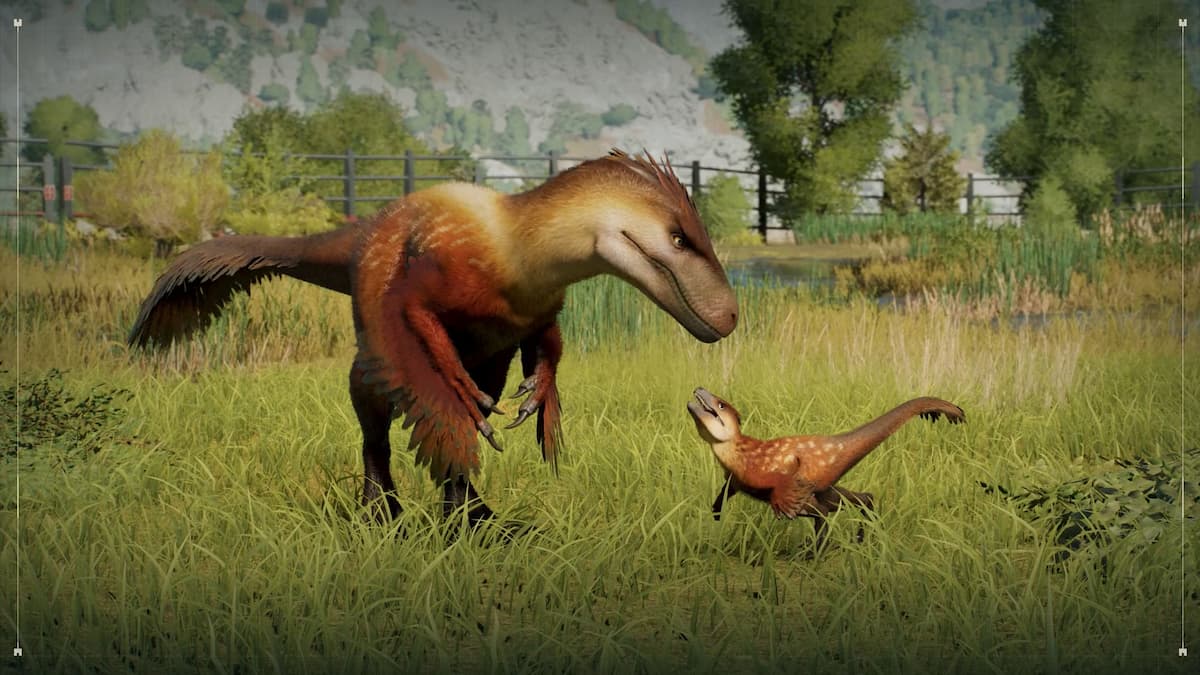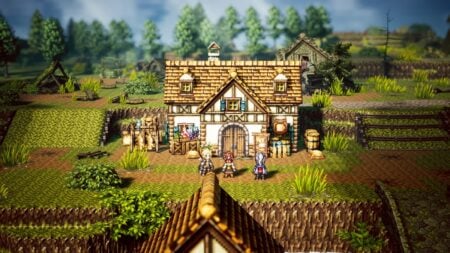Skip To...
Out of all the franchises Frontier Developments has under its catalog, Jurassic World Evolution has always been my favorite, hands down. However, it’s had a few bumps that made me believe at times that the series would reach an extinction point, especially in Jurassic World Evolution 2. But that’s not a thing anymore. Jurassic World Evolution 3 has fixed everything that didn’t work with the sequel, brought back what worked with the first entry, and combined it all into one of the most addictive and complete dinosaur park management simulators I’ve experienced.
Welcome To Your New Park
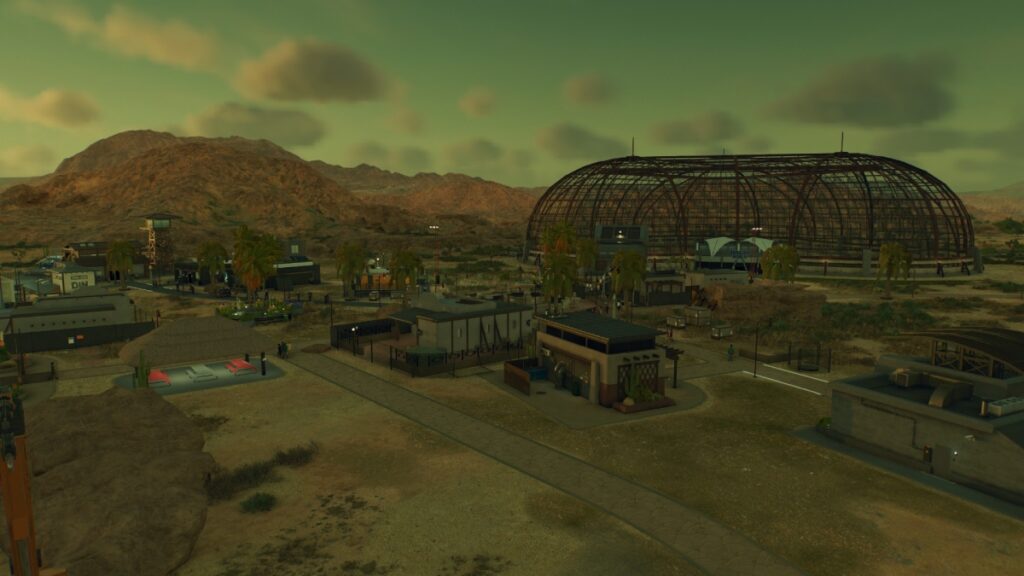
One of the things that broke my heart when I played Jurassic World 2 was the underwhelming campaign. Conversely, the thing that made me fall in love with the series was the campaign of the first entry. I’m glad to inform you that the story-guided part of Jurassic World Evolution3 is similar to that of the first game, if not much better in many ways.
Usually, we see the campaign of any management or strategy game as a long tutorial before diving into sandbox mode. In a way, it is true. However, that doesn’t mean these guided missions are without challenges, plot twists, or some way to actually test your park manager skills before giving you the reins.
Jurassic World Evolution 3 features different campaign missions, all with specific objectives. First, you’ll start with the usual mission that teaches you the ropes of the ranger and maintenance teams, as well as hatching your first dinosaurs. However, the game quickly introduces the brand-new and superb breeding systems and sends your team to the sunny lands of Hawaii. Then, you’ll build a few domes for your flying dinosaurs, and soon after the campaign will let you choose between not one, not two, but three different parks to manage. There’s even an enemy in the background who’s there to spice things up and mess with your park in certain moments of the game. That’s just a quick example of how deep the story goes.
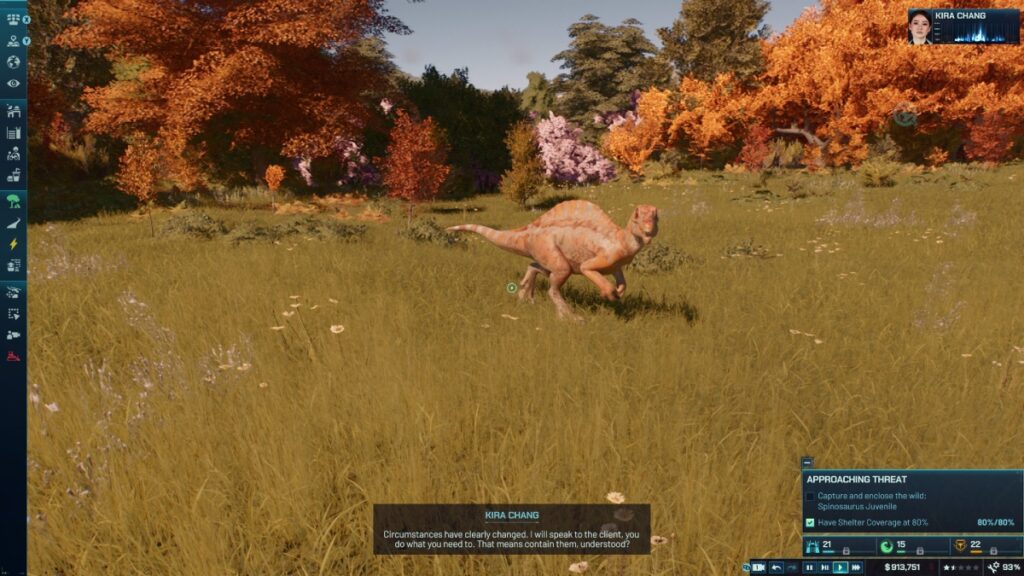
I can’t stress just how immersive, memorable, and challenging the campaign was this time around. In Jurassic World Evolution 2, I wanted to get out of there to start diving into sandbox mode. Here, I actually stuck around until I got my five stars and completed all objectives that let me progress through the story but also let me learn the ropes of the many new systems in the game. Also, despite feeling like a tutorial in a few ways, I never felt that extreme hand-holding part. The campaign allowed me to put my creativity to work. While it taught me the basics, it was my curiosity that led me to discover new tools or use the ones I had previously learned to make something different during a particular mission.
However, it isn’t without its faults, and I’m not talking about the cheesy dialogues or the obvious references. Those are quite bearable, and frankly, this time felt like a breath of fresh air, especially after watching Dominion and Rebirth, both of which made my eyes roll, but that’s a rant for another time. The faults are sadly performance issues that, believe it or not, are fewer than the ones we’ve seen in games like Planet Coaster 2.
I played Jurassic World Evolution 3 in the highest settings, with everything cranked up, and I was surprised to see my PC hitting the 100 FPS mark without frame gen. This entry is one of the most optimized I’ve seen in many years, at least when it comes to park management sims. Yet, there are instances where frame drops are quite noticeable, mainly when building something. As soon as I selected a building and tried to place it, my frames dropped all the way to 40, yet, as soon as I closed that menu, back to that 100 FPS greatness. Other than that, the texture pop-in is also noticeable, especially when moving around your park. Bushes and other details on the ground would only appear once I hovered above them, which broke the immersion several times.
Still, these are just some of the minor issues I encountered, and aside from a few AI pathing hiccups that I was able to fix almost instantly, Jurassic World Evolution 3 is the most polished entry of the franchise.
A Dino-Family Tree
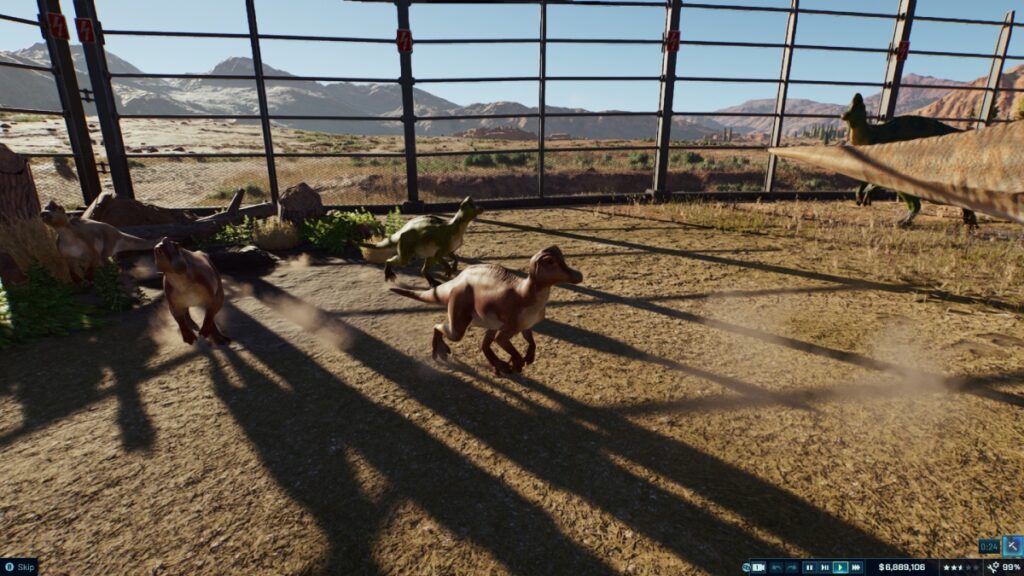
Assuming you haven’t played any Jurassic World Evolution game yet, it has several systems that let you create a park from the ground up, from buildings, facilities, and stores for guests to enclosures to put your prehistoric creatures.
When building your park, you’ll make different facilities to help with any of the surrounding issues, such as rangers to analyze your dinosaurs, a maintenance team to keep everything in top-notch condition, a capture team to tranquilize any rampant dino, an expedition team to bring back fossils to unlock new species, and so on. Each of these facilities consumes power and requires access to paths along your park, so you’ll need to be thinking about where to place them so every single one can work.
The same applies to guest facilities. You’ll have to give them shops, hotels, food establishments, and even restrooms to make their stay much more memorable for them and more profitable for you. There are even ways to make you edit what type of product to sell as well as what features each guest building has that help to increase your customer satisfaction. On top of that, there are many more attractions now, such as balloon rides, which will make visitors happier and more prone to spending even more cash on your park.
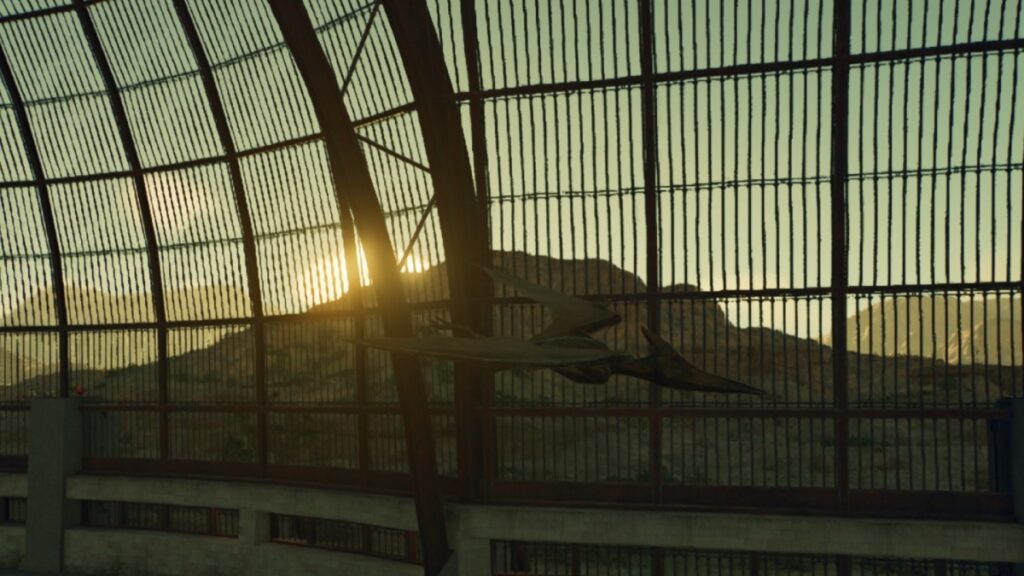
However, the newest feature of Jurassic World Evolution 3 is dino-breeding, which lets you see a whole generation of dinosaurs as they emerge from the egg as juveniles until they age and make way for a new generation. I’ve always been attached to my dinos, but the truth is that this breeding system, which is quite deep but also easy to use, made me even more connected to every inhabitant in the park, even those young ones who ate one or two guests due to my poor management skills. At first, I was expecting this system to be a bit overwhelming, but once you learn the ropes of it, you’ll be creating some appealing creatures that will bring in the cash to your park and make it look better, of course.
Beyond that, many systems from previous entries are back, such as dinosaur patterns, traits, and so on. However, I felt as if the UI had been improved to make managing everything much easier. I played with both a controller and a mouse and keyboard, and everything worked perfectly. Accessing all menus is a breeze, and I was glad to see that all the essential options were locked behind menus and then submenus. Overall, Jurassic World Evolution 3 does an excellent job at keeping the iconic depth of this dinosaur park management sim while also making it highly approachable for those who are jumping into the series for the first time.
More Tools Than Ever
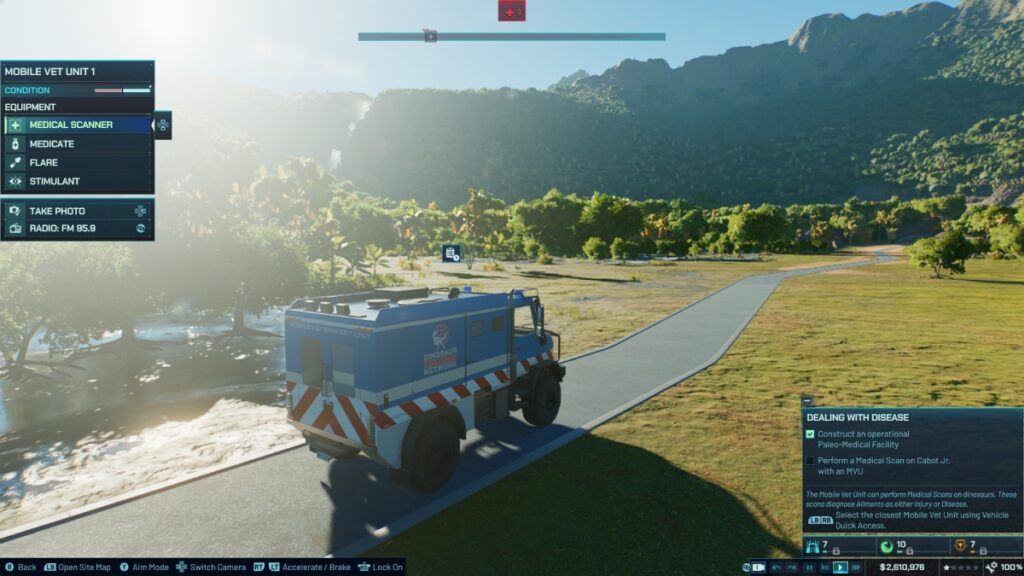
For me, building a park has always been a daunting task. And I’m not talking about those campaign levels or the many challenges the game offers outside the story. No. I’m referring to the sandbox mode. You give me a blank canvas, and I’ll surely start a fire in it, make dinosaurs run loose, yet slowly recover and create a somewhat manageable attraction. Why am I saying that? Well, because it is the first time that a Jurassic World Evolution game actually encouraged me to try every single tool it has to try to create better-looking things for my park.
To give you an example, building in Jurassic World Evolution 3 has modular options now. If you want to create a house, you can do it by adding the walls, doors, roof, and so on. The same applies to every single thing you want to put around the map. But if that’s a bit too overwhelming for you, there are many blueprints already in the game that let you place decorations or buildings.
Furthermore, the terraforming features are some of the best I’ve seen in a management sim, and they made me lose a lot of time while trying them. One of those is the new water brush tool, which you can now use to create natural waterfalls or to create deep water for some dinosaurs to swim in. Also, there are now ways to create natural enclosures, so you can actually build a crater of sorts, surround it with rocks and other features, and then just add a gate with some fences to let your staff get inside. It is one of the best additions in the series and one that leads to some gorgeous park creations that even someone like me, who isn’t that creative when it comes to terraforming, was able to use to create something appealing.
Just like the UI, using these tools isn’t hard at all. Learning what to do and how to do it is pretty easy, and this entry really encouraged me to try different options to see if I was able to create a better nature enclosure or just see how I could beautify some of my paths inside the park. If you are a casual builder and just want to see the dinosaurs and money rolling, you can use several presets to build a functional park. However, if you’re a sandbox fan, prepare to say goodbye to your loved ones because these tools alongside the sandbox mode will hook you for several hours.
Spared No Expense for This Entry
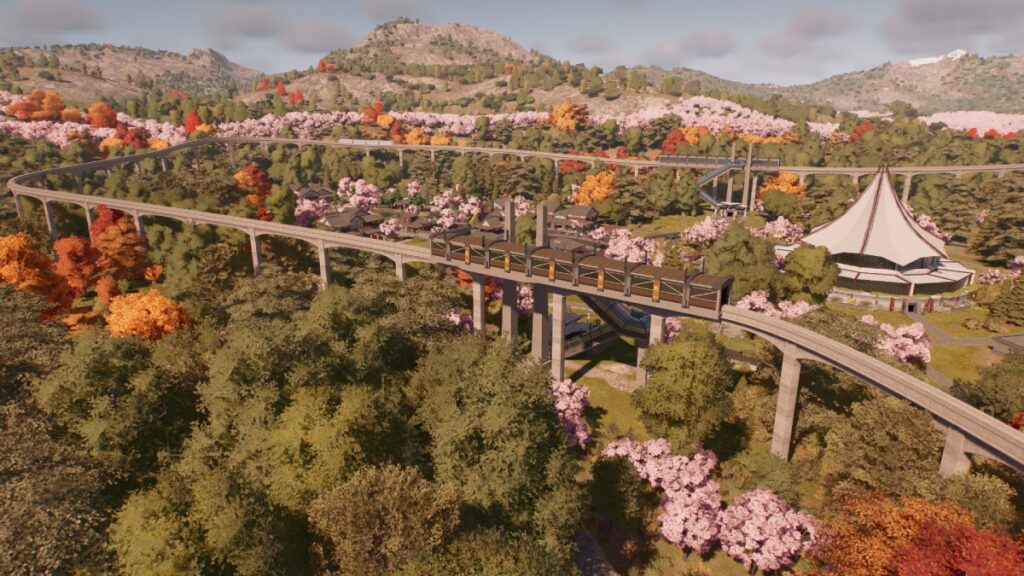
As someone who is a massive fan of all Jurassic Park films and the first Jurassic World movie, Jurassic World Evolution 3 is a dino-dream come true. It brings back everything that made me fall in love with the series while also adding several new features to make this the most robust park management I’ve played in recent memory.
While it still has some of those lingering performance issues that come with each entry and the AI pathing could use some polish, the truth is that I had a blast with each park I managed. I even went deep into sandbox mode for the first time, as all the tools the game offers encouraged me to let my creativity run wild. After a somewhat underwhelming sequel, Jurassic World Evolution 3 comes in triumphantly as the best entry in the whole series.
Jurassic World Evolution 3 (PC Reviewed)
Jurassic World Evolution 3 is, undoubtedly, the best entry in the series that brings many familiar things to let you craft the dino-park of your dreams while also adding several new features to make this entry the most robust and addictive in the whole franchise.
Pros
- A great dino-breeding system
- An interesting campaign
- Several intuitive and powerful tools to customize your park
Cons
- Performance issues when building
- A few AI pathing issues

